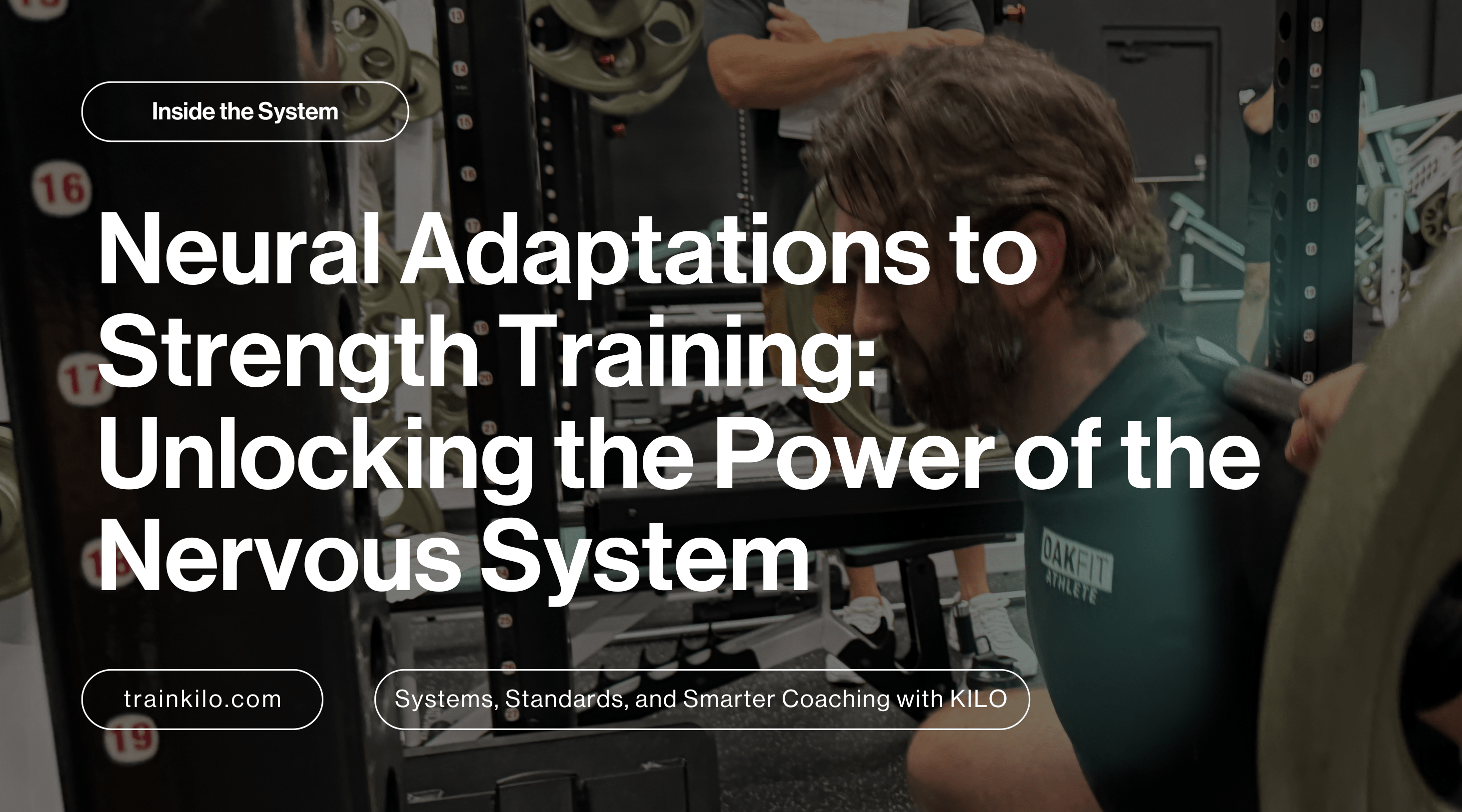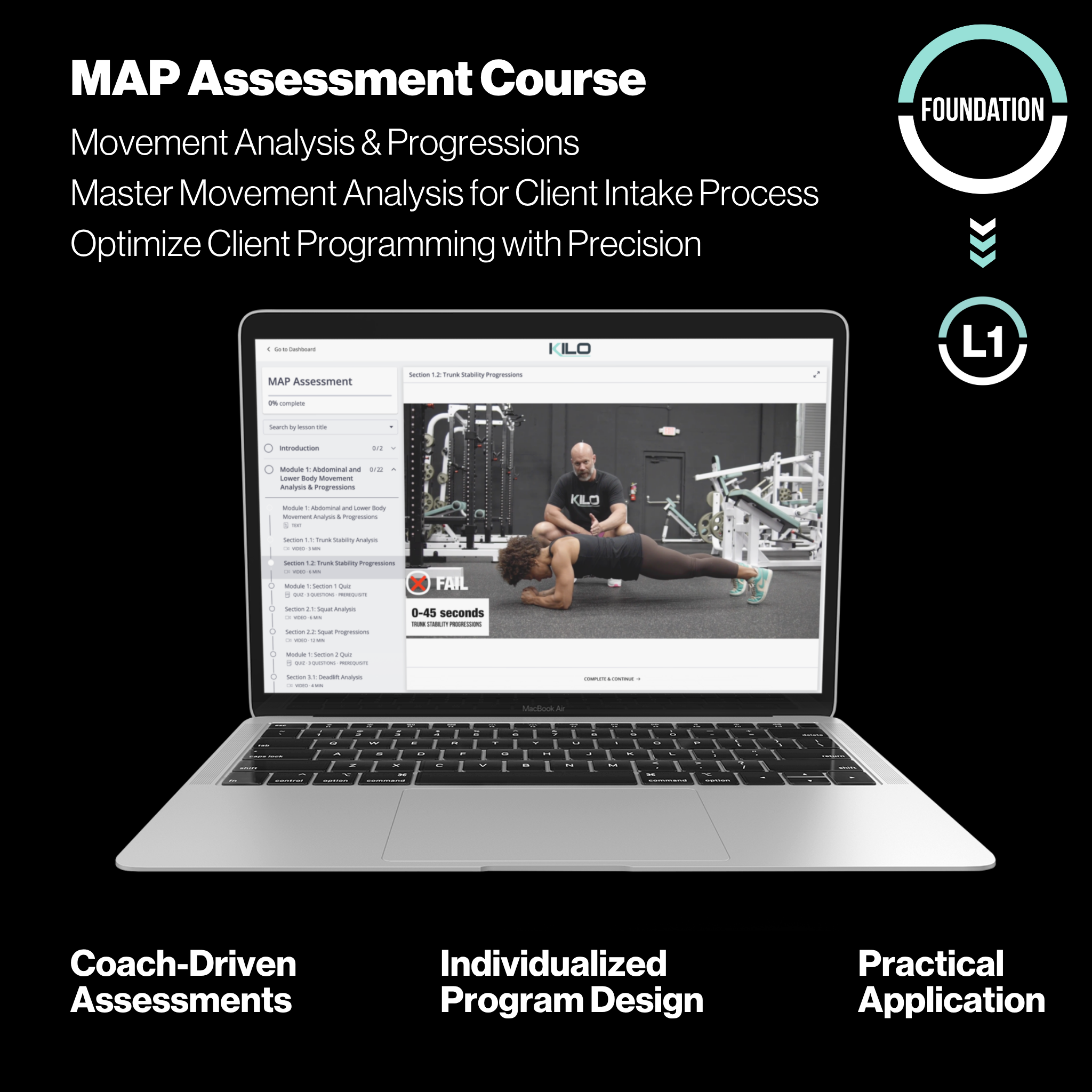Strength is not just built in the muscles, it begins in the nervous system.
From the first session of a novice lifter to the highest levels of strength sports, neural mechanisms play a critical role in driving performance, enhancing coordination, and unlocking greater force potential. At KILO, understanding how neural adaptations evolve allows us to apply programming strategies that respect training age, accelerate development, and reinforce sustainable long-term progress.
This article outlines the key neural mechanisms behind strength development, motor unit recruitment, rate coding, synchronization, inhibition, and task specificity, and shows how we apply these principles across our training system.
Understanding Neural Adaptation: The First Layer of Strength
When a lifter first begins resistance training, gains in performance happen quickly. Strength increases, technique improves, and movement becomes more coordinated. Yet during this early phase, these improvements aren’t driven by muscle hypertrophy, they’re largely the result of neural adaptations.
Neural adaptations refer to the nervous system becoming more efficient at activating the muscles required to perform a task. This includes:
-
Recruiting more motor units
-
Increasing the frequency at which motor units fire (rate coding)
-
Coordinating the timing of activation across and within muscles
These adaptations are especially prominent in the early stages of training, where improvements in coordination, control, and movement pattern refinement lay the groundwork for future gains.
Motor Unit Recruitment: Turning On the Engine
A motor unit consists of a motor neuron and the muscle fibers it innervates. Recruiting more motor units, or recruiting higher-threshold motor units, means more force can be produced.
Strength training enhances the ability to recruit larger, more powerful motor units that are typically reserved for high-effort tasks. In untrained individuals, these motor units may remain underutilized. But with appropriate training, the nervous system learns to access and control them efficiently.
At KILO, we build recruitment capacity using methods like:
-
Submaximal effort work in the early stages (to groove patterns)
-
Gradual intensity ramps in intensification phases
-
Explosive power variations (e.g., jumps, throws, dynamic effort lifts) to target high-threshold motor units
The goal with strength work is to teach the nervous system how to fully engage the muscle tissue it already has, before adding more via hypertrophy training.
Rate Coding: Fire Faster, Lift Heavier
Rate coding refers to the frequency at which motor units are activated. When units fire faster, they can generate more force. This is especially relevant in a power cycle with explosive and high-speed movements, where quick recruitment and force development are required.
Increasing rate coding enhances:
-
Whole-muscle activation
-
Rate of force development (RFD)
-
Peak force output
At KILO, we use:
-
Olympic lift variations, accommodating resistance and ballistic movements for power emphasis
-
Clusters and wave loading to expose the nervous system to repeat high-intensity efforts
-
Complex and contrast training to shift between heavy and fast efforts within a session
These tools are layered progressively depending on the trainee’s phase and training history.
Synchronization: Timing the Effort
As strength improves, motor units begin to fire more synchronously, meaning multiple motor units are activated at the same time to produce a more coordinated, powerful contraction.
This synchronization is particularly important in movements requiring high force output, like squats, deadlifts, or Olympic lifts. It also contributes to smoother and more stable execution of heavy loads.
We reinforce synchronization through:
-
Compound lifts performed at high intensities (80%+)
-
Isometric efforts at key joint angles
-
Methodical tempo alterations during accumulation phases (to increase control and feedback)
This strategic layering ensures motor unit timing improves alongside raw output.
Neural Inhibition: Lifting the Governor
The body has built-in mechanisms to limit excessive force output as a protective strategy. These neural inhibitors prevent over-recruitment of motor units or excessive firing frequency, especially when tissue isn’t yet prepared for high loads.
Strength training can reduce the sensitivity of these inhibitory mechanisms, allowing greater voluntary activation of muscle.
To reduce inhibition safely, we:
-
Build tension and bracing skills early in a training cycle
-
Use progressive overload principles across intensity and effort
-
Integrate session rate of perceived exertion based autoregulation to manage readiness without excessive fatigue
The result is a nervous system that trusts the muscular system to handle higher demands.
Task Specificity: The Neural Code of Movement
The nervous system adapts in a task-specific manner. Motor patterns, timing, and coordination are refined in response to the exact demands of the movement.
That means training adaptations are highly specific to the exercises and loading parameters used. This is why KILO emphasizes movement pattern exposure and training method periodization, not just to vary stress, but to expand the motor library of the lifter.
In practice, we may:
-
Use front squats to emphasize anterior chain recruitment and bracing under vertical load
-
Implement single-leg movements to challenge coordination and intramuscular timing
-
Rotate grips and angles in pulling and pressing to reinforce versatility and reduce asymmetries
By the time we return to a primary lift, the trainee has gained more tools to express strength efficiently.
KILO in Practice: How We Apply Neural Concepts
We don't isolate these neural mechanisms, we integrate them.
For a novice, we might use a 3-week accumulation mesocycle to reinforce recruitment and patterning with moderate load and higher exercise rehearsal frequency. In intensification, we drive up effort and emphasize speed of contraction and coordination through intended maximal concentric acceleration (IMCA) at 80%+.
For an advanced lifter chasing performance, neural development might include:
-
High-intensity wave loading phases
-
Mixed-modality pairings through contrast training methodologies (e.g., squat + squat jump)
-
Joint-specific overcoming isometric loading to sharpen synchronization
In every case, neural training doesn’t mean fancy, it means precise. The timing of when, how, and to what degree these neural elements are trained depends on phase goal, cycle desired outcome, and performance requirements.
Final Thoughts
Neural adaptations form the bedrock of strength expression. While hypertrophy builds the engine, it’s the nervous system that turns it on, tunes it, and revs it to max output.
At KILO, we apply neural concepts across all phases of training, not in isolation, but as part of an integrated strategy for long-term development. By understanding how the nervous system adapts, coaches can design programs that are not just hard, but intelligent, individualized, and high-impact.
Train with systems. Coach with clarity. Progress with purpose.








Share:
Built from the Ground Up: How We Structure Lower Body Strength Sessions
Two-a-Day Training: Structuring Double Sessions for Smarter Results